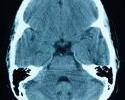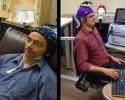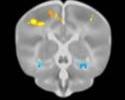Several months after suffering a stroke, a Toronto man began to hear colors and taste sounds.
In what is believed to be just the second known case caused by brain injury, the Canadian man has been diagnosed with a rare neurological condition called synesthesia.
Normally one is born with the condition. In synesthesia, a person experiences stimuli by two or more of the senses simultaneously. It is thought to be the cause of a cross-wiring in the brain's sensory system. People with the condition might experience music in terms of color or the sense of touch in terms of smell.
Second known case of acquired synesthesia
This most recent case is described by Dr. Tom Schweizer, a neuroscientist and director of the Neuroscience Research Program at St. Michael's Li Ka Shing Knowledge Institute, in the current issue of the journal Neurology. Schweizer used functional MRI to look at the man's brain and then compared it against six controls. Specifically, he used the James Bond Theme and a euphonium solo. His findings support the theory that synesthesia is caused by faulty wiring in the brain:
The areas of the brain that lit up when [the patient] heard the James Bond Theme are completely different from the areas we would expect to see light up when people listen to music. Huge areas on both sides of the brain were activated that were not activated when he listened to other music or other auditory stimuli and were not activated in the control group.
He believes that in the months after the man had his stroke, his brain tried to self-repair and got some wires crossed, becoming just the second known case of acquired synesthesia.
Source: MNT








